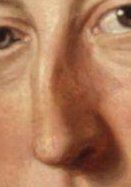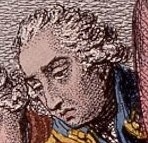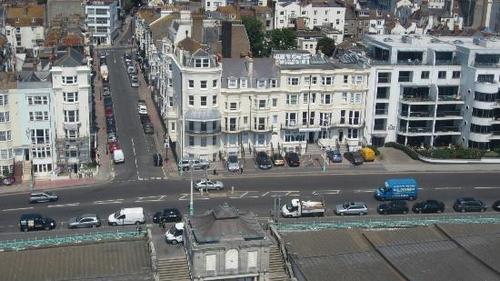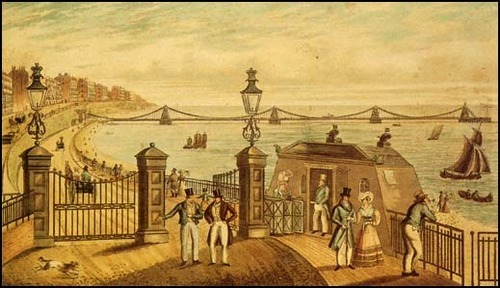Come on. You *knew* this post was coming. (If you didn’t, you should have guessed…)
I have long been aware of Sir Nathaniel Wraxall’s description of John, Lord Chatham in his Posthumous Memoirs of his Own Time (volume 3, 129 if you’re interested). Shortly before launching into a fairly damning echo of all the nasty stories he’d ever heard about John, Wraxall states:
“Lord Chatham inherited … his illustrious father’s form and figure … The present earl so strongly resembles his father in face and person, that if he were to enter the house of peers, dressed after the mode of George the Second’s reign … the spectators might fancy that the great statesman was returned once more upon earth”.
Hmmm, really? I’d never really thought of John being a spit for his father. (Although I will admit he inherited Daddy’s jaw… compare the original Hoppner of John, not the Valentine Green print, with the Hoare painting of Pitt the Elder, and the resemblance in the lower half of the face is astounding.)
And yet clearly there was something in it. Witness the philosopher Jeremy Bentham, writing to George Wilson in 1781 (quoted in Benthamiana, or select extracts from the works of Jeremy Bentham… London, 1843, p. 333): “Do you know Lord Chatham? … He has his father’s Roman nose…”
Wait, what?!
I always assumed the two older Pitt brothers looked like their mother (John’s jaw notwithstanding). John definitely had his mother’s eyes, and I thought her nose (and probably her dress sense, although I digress):

(from here)
And yet Bentham got me thinking (and yes, Wraxall too, although mostly I’d like to slap him silly, but I’m digressing again). John being the main character in my novel, I’d like to think I know what he looks like. I have seen five bona fide John-sat-in-person-for-this-portrait paintings of Lord Chatham now in addition to three derivatives, all of the Hoppner. They are all sufficiently similar that I can say, with absolute certainty, that John had sleepy blue almond-shaped eyes, a strong chin, and VERY dark hair (those eyebrows…!). BUT HIS NOSE KEEPS CHANGING SHAPE.
I’m inclining now to think that John’s nose was not as straight and pointy as I first thought. I’m not sure I can go quite so far as Bentham and say he had a “Roman nose” like his father:

… but I think he definitely did not have a perfectly straight nose.
Of the two paintings I have seen of John, two depict a short, straight nose:

(from The Death of the Earl of Chatham by John Singleton Copley: sorry it’s a bit blurred, but I was trying to look like I was checking my phone messages at the time :-D)
and

(studio of John Hoppner, courtesy of the Royal Marines Commando Barracks Officers’ Mess, Plymouth)
So far, so similar to Hester, Countess of Chatham and … definitely … NOT Roman.
But how about this?

(from the Martin Archer Shee portrait, which I otherwise loathe… you can see it in its full glory here)
Or this?

(from The Trial of Queen Caroline by Sir George Hayter: you can see the full painting [and good luck picking out John in THAT!] here)
I think the Hayter one, particularly, gives a flavour of why Wraxall might have thought John might look like Pitt the Elder if dressed up in a periwig, although it’s still not quite a classic “Roman” nose in my opinion.
And incidentally the Valentine Green print of the Hoppner gives John’s nose a rather less straight aspect than the original appears to:

For bonus points, here’s Gillray’s depiction of John in “The Death of the Great Wolf” (1795), in which John’s nose is clearly not straight:

There is another portrait of John that falls somewhere midway between straight and not straight:

It’s pretty straight on the whole and could easily be mistaken for his brother’s. And on that note, here’s Pitt the Younger’s nose by the same artist (George Romney):

… from which you can see that John and William’s noses were, basically, the same shape. So if John had a Roman nose… maybe William did too?
Or maybe it was just the name “Chatham” that made people think he *must* take after his father in some way?
Either way, I’m going to have to stop here, because I’ve run out of noses to post……..













